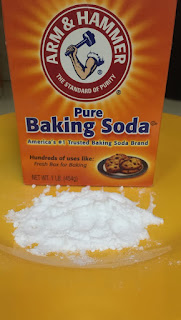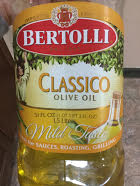8H Scientists ... share your observations, learning, awesome ideas and discussions here!
Sunday, November 29, 2015
Saturday, November 28, 2015
Ionic and Covelant Bonds
Every combination of atoms is a molecule. Compounds are formed together when two different pure elements combine together. Now a compound is a molecule made of atoms from different elements. All Compounds are molecules and yet not all molecules are are compounds.An example is that (H2) is not a compound because, its only one element while H2O is a compound because it involves two elements Hydrogen and Oxygen.There are two types bonds well, let me rephrase that there are two most common bonds and they are Ionic and covalent bonds. Ionic bonds are when the atoms transfer electrons to each other. While on the other hand Covalent bonds involve sharing a pair of valence electrons by two atoms.Ionic Bonds In My House:
Friday, November 27, 2015
Chemical compunds
Thursday, November 26, 2015
Ionic and Covalent Compounds
Covalent and Ionic Bonds
Fwd: Ionic Bonds & Covalent Bonds
Ionic and Covalent in the house! - Ryan
Wednesday, November 25, 2015
Ionic & Covalent Bonds


Sugar is used for sweetening certain things for example coffee. The chemical compound in sugar is carbon, hydrogen and oxygen. The chemical formula for sugar is C12H22O11.
Chemical Compounds
Compounds
Chemical Compounds
Compounds are formed when two different pure elements combine together. Every combination of atoms is a molecule.A compound is a molecule made of atoms from different elements. All compounds are molecules but not all molecules are compounds. An example of this scenario would be that (H2) is not a compound because it is only one element while H2O is a compound because it is involves two elements Hydrogen and Oxygen.
The two types of most common bonds are ionic and compound bonds. Covalent bonds involve the sharing of a pair of valence electrons by two atoms. On the other hand, Ionic bonds are when the atoms transfer electrons to each other.
Ionic Bonds found at home:
Toothpaste which is used to brush your teeth. The chemical compound in toothpaste is sodium fluoride. The chemical formula for toothpaste is NaF.
Marble is used for the floor, counter tops and household items. The chemical compound in marble is calcium, carbon and oxygen. The chemical formula is CaCO3.
Covalent Bonds found at home
:
Sugar which is used for sweetening,. The chemical compound in sugar is carbon, hydrogen and oxygen. The chemical formula for sugar is C12H22O11.
Orange Juice which is used to drink. The chemical compound in orange juice is carbon, hydrogen and oxygen. It contains citric acid. The chemical formula is C6H8O7.
- Sarah Imran
Chemical Compounds
How are compounds formed? Compounds are formed when chemical reaction occurs. This chemical reaction causes the atoms of the different elements to bond meaning they are pulled together by a force.
There are two types of bonds, covalent and ionic bond. Covalent bonding occurs when pairs of electrons are shared by atoms. These atoms will then covalently bond with other atoms to gain more stability by collecting more electrons to have a full outer or valence shell. Ionic bond on the other hand is when a complete transfer of valence electron(s) between atoms occurs. It is a type of chemical bond that works with two oppositely charged ions.
Two Ionic Compounds:
Two Covalent Compounds:
(https://answers.yahoo.com/question/index?qid=20110607144320AAAL3iN)
Oil: made from carbon and hydrogen covelantly bonded together. Oil at home is mostly used for cooking. Formula C36H74
- ANGELIKA TESSMANN
VS HW
BBC - GCSE Bitesize: Reactions and compounds
C30H52O3 |
Ionic and Covalent Bonds and Compunds
Compounds are formed by chemical reactions. When elements react together to form compounds, their atoms join together with other atoms using chemical bonds. For example, iron and sulfur react together to form a compound called iron sulfide. There are two types of bonds: ionic bonds and covalent bonds. An ionic bond is a bond that is formed by atoms losing or gaining electrons (ions). An ionic bond involves a metal and nonmetal ion. A covalent bond is a bond that is formed when atoms share electron pairs (these electron pairs are also called bonding pairs). There are two types of compounds: ionic compounds and covalent compounds. Ionic compounds are formed when ions are held together in a structure by ionic bonding. Covalent compounds are formed when two or more nonmetal atoms bond by sharing electrons (covalent bonding).
One example of an ionic compound is baking soda (NaHCO3) (also known as sodium bicarbonate). It is an ionic compound because ionic bonds are formed with metal and nonmetal atoms. Sodium (Na) is a alkali metal, Hydrogen (H) is a nonmetal (does not belong to any group), Oxygen (O) is a Chalcogen nonmetal, and Carbon (C) is a also a nonmetal (in group 14 but that group doesn't have a group name). Another example of an ionic compound is marble (CaCO3) (also known as calcium carbonate). It is also an ionic compound since its ionic bonds are formed with atoms of a metal and a nonmetal. Calcium (Ca) is a alkaline Earth metal, Carbon (C) is a nonmetal, and Oxygen (O) is a Chalcogen nonmetal.
One example of a covalent compound is sugar (C12H22O11) (also known as sucrose). It is a covalent compound because covalent bonds are formed with only nonmetal atoms. Carbon (C) is a nonmetal, Hydrogen (H) is a nonmetal, and Oxygen (O) is a Chalcogen nonmetal. Another example of a covalent compound is vinegar (C2H4O2) (also known as acetic acid, or ethanoic acid). Carbon (C) is a nonmetal, Hydrogen (H) is a nonmetal, and Oxygen (O) is a Chalcogen nonmetal.


As you can see, there are ionic and covalent compounds all around us and we use them in our everyday lives, and that the same elements can form different compounds (sugar and vinegar are both different substances but they are both made out of carbon, hydrogen, and oxygen).




























